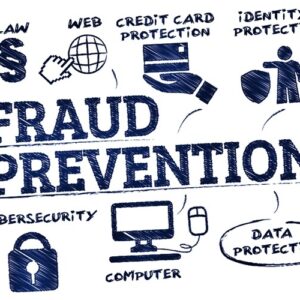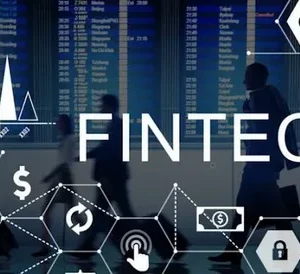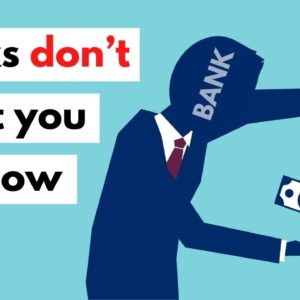
Outline:
1. Introduction
- Brief overview of the “Buy Now, Pay Later” (BNPL) trend
- The rise of BNPL services and their popularity among consumers
- Purpose of the blog: To explore the potential risks and benefits of BNPL services
2. What is Buy Now, Pay Later (BNPL)?
- Definition of BNPL services
- Popular BNPL platforms (e.g., Klarna, Afterpay, Affirm)
- The mechanics of how BNPL works
3. The Appeal of Buy Now, Pay Later
- Why BNPL is so attractive to consumers
- Instant gratification and the ease of online shopping
- The rise of BNPL services during the pandemic
4. Is BNPL Truly Financial Freedom?
- Understanding the appeal of “no interest” payment plans
- The illusion of financial freedom: What BNPL doesn’t tell you
- How BNPL leads to increased consumer debt
5. The Hidden Costs of BNPL
- Late fees and interest charges for missed payments
- Penalties for not paying on time
- How BNPL services trap consumers into debt cycles
6. BNPL and the Young Consumer: A Dangerous Trend?
- Why BNPL is especially popular among Gen Z and Millennials
- How BNPL services prey on younger consumers’ lack of financial experience
- The psychological effect of BNPL on younger generations
7. The Debt Trap: How BNPL Leads to Accruing Debt
- The growing trend of missed payments and the snowball effect
- The impact of accumulating BNPL debt on credit scores
- Real-life examples of how BNPL leads to financial distress
8. BNPL and the “Buy Now, Pay Later” Mindset: The Dangerous Cycle
- How the “Buy Now, Pay Later” mentality breeds a culture of consumerism
- The psychology behind BNPL and the “spend now, pay later” mentality
- Why BNPL services are more addictive than they seem
9. Consumer Protection and BNPL: Are There Enough Safeguards?
- Are BNPL companies regulated?
- The risks of unregulated services
- What’s being done to protect consumers from BNPL misuse?
10. How BNPL Affects Your Financial Health
- The impact of BNPL on budgeting and saving
- How BNPL can lead to financial instability
- Long-term effects on your credit score and financial reputation
11. Alternative Ways to Manage Payments and Avoid BNPL Traps
- Budgeting and saving techniques
- Using credit responsibly
- Exploring other financing options like traditional credit cards or layaway plans
12. The Future of Buy Now, Pay Later: Trends to Watch
- How BNPL is evolving in the financial world
- The potential for stricter regulations on BNPL services
- Will BNPL remain popular, or is it headed for a decline?
13. Conclusion: Is BNPL a Financial Freedom or Debt Trap?
- Summing up the pros and cons of BNPL services
- Why consumers must exercise caution when using BNPL
- The importance of financial literacy in avoiding BNPL pitfalls
14. FAQs
- What is Buy Now, Pay Later (BNPL)?
- How does BNPL work, and is it really interest-free?
- Are BNPL services safe to use?
- What happens if I miss a BNPL payment?
- How can I avoid the BNPL debt trap?
READ MORE: The Rise of Conscious Spending: How Gen Z is Redefining Personal Finance for Good
Here’s The Dark Side of ‘Buy Now, Pay Later’: Dissecting the Fine Line Between Modern Financial Convenience and Long-Term Debt Risk in Consumer Culture
Introduction: Understanding the BNPL Phenomenon
In today’s digital age, the concept of Buy Now, Pay Later (BNPL) has become a mainstream way for consumers to make purchases. This payment option has exploded in popularity, offering consumers the ability to buy items immediately and pay for them in installments, often with little to no interest. But is this the financial freedom it’s marketed as, or is it a carefully disguised debt trap? In this article, we will delve into the dark side of BNPL, exploring both its appeal and the potential dangers it poses to financial health.
What is Buy Now, Pay Later (BNPL)?
Buy Now, Pay Later (BNPL) services allow consumers to purchase products or services and spread out the payments over a period of time, typically in installments. Companies like Klarna, Afterpay, and Affirm are some of the most well-known BNPL platforms, and they have revolutionized the way people shop online. These services offer short-term loans or deferred payments, often without any interest if paid within a certain period.
How BNPL Works:
- Select BNPL as a payment option: At checkout, consumers can choose BNPL as their preferred payment method.
- Split the payment: Payments are typically broken down into 4 equal installments, due every two weeks or monthly.
- Interest-free period: If you pay on time, you often don’t incur any interest. However, missing a payment or extending the payment period usually incurs interest and penalties.
While this may seem like a convenient way to manage purchases, the risks often go unnoticed.
The Appeal of Buy Now, Pay Later
So, why is BNPL so attractive to consumers, especially millennials and Gen Z? The immediate gratification of purchasing something without the upfront cost is undeniably appealing, particularly for those who don’t have access to credit cards or prefer not to use them.
For many, BNPL has become a way to manage cash flow without having to worry about paying a large sum of money all at once. With the increasing shift towards online shopping and the instant availability of BNPL options, it’s no surprise that the service has boomed.
But does the lack of immediate payment lead to financial freedom, or does it pave the way for bigger financial problems down the road?
Is BNPL Truly Financial Freedom?
While BNPL is often advertised as a way to gain financial flexibility, the reality is that it creates a false sense of financial freedom. The attraction lies in the ability to break down a large purchase into smaller, manageable payments. But the truth is that many consumers don’t fully consider the long-term consequences of deferred payments.
What BNPL doesn’t make clear is how easily these small, manageable payments can add up, leading to unmanageable debt if you fail to stick to a payment schedule. Instead of providing financial freedom, it can quickly lead to financial instability if misused.
The Hidden Costs of BNPL
While BNPL services often tout zero interest as a key benefit, the truth is that late payments and missed deadlines can result in significant fees and penalties. Here are some of the hidden costs that consumers may not be aware of:
- Late Fees: Missed payments often result in hefty late fees, which can range from $5 to $15 per missed payment, depending on the BNPL service.
- Interest Charges: If you don’t pay on time or miss an installment, interest rates can kick in, sometimes as high as 25-30% APR.
- Debt Accumulation: When consumers have multiple BNPL plans across different services, keeping track of due dates and balances becomes increasingly difficult, which can result in accumulating debt.
These hidden costs make BNPL a far riskier option than it initially appears.
BNPL and the Young Consumer: A Dangerous Trend?
Gen Z and millennials are the primary demographics using BNPL services. The allure of instant gratification, the ease of online shopping, and the ability to pay later without credit checks are major draws for younger consumers. However, this younger group often lacks the financial experience to understand the long-term implications of using BNPL.
For many young people, BNPL is appealing because it doesn’t require a credit card or a credit check, allowing them to make purchases that they otherwise might not be able to afford upfront. But with limited financial education, younger consumers may find themselves easily falling into debt traps without realizing the full extent of their financial obligations.
The Debt Trap: How BNPL Leads to Accruing Debt
While BNPL services offer the promise of spreading payments over time, they can quickly snowball into debt if not carefully managed. Many consumers who use BNPL services often forget about upcoming payments or miss deadlines, resulting in late fees and interest charges. This creates a vicious cycle of debt, as each missed payment adds another layer of financial strain.
For consumers who already have multiple BNPL accounts, it’s easy to see how quickly things can get out of control. When payments are missed across several platforms, the total debt can accumulate rapidly.
BNPL and the “Buy Now, Pay Later” Mindset: The Dangerous Cycle
One of the most dangerous aspects of BNPL is the mindset it fosters. The idea of purchasing an item now and paying later encourages a spend-now, pay-later mentality that drives a culture of constant consumption. This encourages people to purchase things they might not necessarily need or can afford, just because it’s easy to delay payment.
The Buy Now, Pay Later mentality can also lead to individuals buying things impulsively, leading to regret and financial stress. This constant need to stay ahead of payments leads to a lack of long-term financial planning and an unhealthy reliance on credit.
Consumer Protection and BNPL: Are There Enough Safeguards?
Despite its growing popularity, BNPL services are largely unregulated, which leaves consumers vulnerable to unfair practices. While there are some consumer protections in place, such as limiting the amount of debt one can accrue, these protections vary by service and country.
Currently, BNPL services are not subject to the same regulations as credit cards or personal loans, which means there’s little oversight regarding how these companies operate or how they collect payments. This lack of regulation can put consumers at risk of exploitation, particularly if they miss payments or fall into debt.
Check out this consumer protection guide to learn more about BNPL services and the regulatory environment.
How BNPL Affects Your Financial Health
Using BNPL services can have serious consequences on your financial health. If you regularly use BNPL to pay for purchases, it can distort your budgeting and spending habits. The ease of deferring payments encourages impulsive buying, leading to financial instability in the long run.
In addition, missing payments or carrying over balances can negatively impact your credit score, making it harder to secure traditional loans or credit in the future. It can also affect your ability to make larger financial commitments, such as applying for a mortgage.
Alternative Ways to Manage Payments and Avoid BNPL Traps
If you want to avoid falling into the BNPL trap, consider alternative ways to manage your finances:
- Budgeting: Stick to a budget that includes savings for future purchases.
- Credit Cards: Use credit cards with clear repayment terms and rewards for responsible usage.
- Layaway Plans: Some retailers still offer layaway, where you can reserve an item and pay for it in installments before receiving it.
Read this budgeting guide to learn how to effectively manage your money and avoid debt traps.
The Future of Buy Now, Pay Later: Trends to Watch
As the BNPL trend continues to grow, it’s likely that we will see more regulation and consumer education in the future. Many experts predict that BNPL companies will face greater scrutiny, especially as their services become more widespread and affect more people’s financial health.
Some BNPL platforms may also be forced to adopt more transparent practices, making it easier for consumers to understand their financial obligations and risks.
The Buy Now, Pay Later (BNPL) sector has experienced exponential growth in recent years, becoming a popular alternative to traditional credit and payment methods. As more consumers embrace this service, and with the increasing demand from younger generations like Gen Z and Millennials, the future of BNPL is poised for even more transformation. However, with its rapid expansion come both challenges and opportunities, particularly around regulation, consumer education, and technological advancements.
Let’s dive deeper into the emerging trends and potential directions the BNPL industry may take in the coming years.
1. Increased Regulation and Consumer Protection
As the BNPL industry grows, so does the scrutiny from financial regulators and consumer protection agencies. In many countries, BNPL services are still largely unregulated, which raises concerns over consumer rights, transparency, and fair lending practices. The unregulated nature of BNPL can sometimes lead to aggressive marketing tactics, hidden fees, and a lack of clear terms that could hurt consumers financially.
The future of BNPL is likely to include more stringent regulations aimed at protecting consumers and ensuring fair lending practices. Governments and regulatory bodies will likely introduce measures to:
- Ensure that BNPL services provide full disclosure of all fees and costs, including penalties for missed payments and interest rates that may apply after the interest-free period.
- Introduce creditworthiness checks for consumers to avoid over-indebtedness.
- Implement rules that require companies to offer better financial education and ensure that users are fully aware of the risks involved in using BNPL services.
In the United States, the Consumer Financial Protection Bureau (CFPB) has already begun investigating BNPL services to ensure they operate in the best interest of consumers. The rise of mandatory disclosures and standardized contracts could change how BNPL companies operate globally.
Read more about BNPL regulation and what’s coming in the future in this CFPB article.
2. Integration of BNPL with Credit Reporting and Consumer Credit Scores
As BNPL services evolve, credit scoring systems may adapt to include BNPL usage in their calculations. Currently, BNPL payments do not usually affect a person’s credit score unless they default on payments, but this is expected to change as more companies and consumers get involved with BNPL.
Including BNPL data in credit scores could help establish more responsible borrowing behavior, especially among younger consumers who have no prior credit history. Here are some possible future developments in credit scoring:
- Inclusion of BNPL Payment History: Regular on-time BNPL payments could positively influence a person’s credit score, potentially giving those without traditional credit lines an opportunity to build a more robust credit profile.
- Penalties for Missed Payments: If missed BNPL payments were to appear on credit reports, it could have a negative impact on a consumer’s credit score, encouraging more responsible behavior.
The shift towards including BNPL data in credit scoring could make these services more closely aligned with traditional credit products, providing greater oversight and accountability.
Learn more about how BNPL services and credit scoring intersect in this Experian article.
3. BNPL Expansion into New Markets and Industries
The future of Buy Now, Pay Later isn’t just limited to the fashion, electronics, and retail industries. As BNPL continues to prove its value for both consumers and businesses, the industry is likely to expand into new verticals. Expect to see BNPL offered in:
- Healthcare: BNPL services could soon be used for medical bills, elective surgeries, dental work, and wellness services. This could help individuals afford healthcare costs upfront and spread the payments over time.
- Travel and Hospitality: As travel becomes more accessible post-pandemic, BNPL may be increasingly used to finance vacations, hotel bookings, and flights. It could allow people to book vacations today and pay over time, which is appealing to consumers who want more flexible payment terms.
- Home Improvement: With the rise of DIY home improvement projects, BNPL services could be extended to cover large purchases for home renovations, furniture, and appliances.
This diversification into other industries will not only increase consumer demand for BNPL services but will also create new opportunities for companies to offer flexible payment solutions.
4. Technological Advancements: The Role of AI and Machine Learning in BNPL Services
As technology evolves, so too will the Buy Now, Pay Later industry. The integration of artificial intelligence (AI) and machine learning (ML) is expected to play a significant role in enhancing the BNPL experience, both for consumers and businesses.
Some potential advancements include:
- Personalized Payment Plans: AI could help BNPL providers offer more tailored payment schedules based on a customer’s spending habits, financial situation, and preferences. Machine learning could allow BNPL services to offer more dynamic and flexible repayment options, such as variable payment amounts that align with the user’s income flow.
- Predictive Analytics: By analyzing consumer data, AI could predict the likelihood of a consumer defaulting on a payment and offer proactive measures, such as reminders or changes to the repayment terms. This could help prevent missed payments and improve financial stability for both consumers and providers.
- Fraud Prevention: AI and ML could also be used to improve fraud detection, ensuring that only verified, responsible users are allowed access to BNPL services.
These technological improvements will likely make BNPL more efficient, convenient, and secure for both users and service providers.
5. Increasing Focus on Sustainability and Ethical Consumption
As sustainability becomes a growing concern for consumers, BNPL services could begin to align with ethical consumption trends. Consumers are increasingly choosing to support brands and services that are eco-friendly, socially responsible, and sustainable. BNPL companies could begin to partner with eco-conscious businesses and offer incentives for green purchases, such as:
- Discounts for eco-friendly purchases: Consumers who buy sustainable products may receive better payment terms or incentives from BNPL companies.
- Partnering with socially responsible brands: BNPL services could focus on partnering with brands that prioritize environmental sustainability and social justice.
This could make BNPL services not only more appealing to younger, environmentally-conscious consumers but also help shape a more ethical and sustainable economy.
6. More Integration with E-Commerce and Payment Systems
Another significant shift we can expect in the future is the deeper integration of BNPL services within e-commerce platforms. As online shopping becomes even more ubiquitous, BNPL will likely become a standard payment option on more websites, apps, and platforms. For example:
- Seamless BNPL Checkout: Expect BNPL options to be integrated into online checkout flows without the need for external redirects. E-commerce platforms will incorporate BNPL directly into their existing payment systems, allowing for a smoother and more convenient user experience.
- Omnichannel Payments: As BNPL becomes more ubiquitous, it could be expanded across multiple platforms—allowing consumers to use BNPL in stores, on apps, or even at physical retail locations via QR codes or contactless payments.
This increase in BNPL integration will make it even easier for consumers to use BNPL for everyday purchases, making it a go-to payment option for all types of transactions.
7. Changing the Consumer Mindset: Financial Literacy and Education
One of the biggest trends we can expect to see is an increase in financial literacy programs aimed at educating consumers about BNPL and its implications. As BNPL services become more mainstream, it will be critical for consumers to understand the full scope of their financial obligations and how BNPL fits into their overall financial plan.
In the future, BNPL providers may be required to offer more transparency and financial education tools, such as:
- Educational content about how BNPL works and how to use it responsibly.
- Reminder systems that help users track their payments and avoid missing deadlines.
- Financial literacy workshops for younger consumers, to better equip them to manage their spending habits and avoid debt traps.
This move towards consumer education will likely be part of the regulatory changes, ensuring that consumers are fully aware of the risks and benefits of BNPL services before making decisions.
The future of Buy Now, Pay Later is full of possibilities and potential. As the market matures, we can expect increased regulation, technological innovation, and greater consumer education around these services. BNPL has the potential to provide significant value to consumers by offering flexible payment solutions, but it also comes with risks that need to be addressed.
For BNPL to evolve positively, companies must prioritize transparency, responsible lending, and financial education, while regulators must step in to ensure that consumer rights are protected. As the industry grows, we will likely see more consumer-friendly changes that benefit everyone, from better access to ethical consumption to innovative payment methods that create a more balanced and sustainable financial ecosystem.
Conclusion: Is BNPL a Financial Freedom or Debt Trap?
While Buy Now, Pay Later services provide a convenient way to manage purchases, they come with hidden risks that can easily lead to debt accumulation. The appeal of instant gratification and deferred payments is tempting, but it’s important to understand the long-term consequences of using these services.
If used responsibly, BNPL can be a useful tool for short-term purchases, but consumers must be cautious about the temptation to overspend and the potential for debt accumulation. In the end, financial freedom comes from planning, saving, and spending responsibly, not from deferring payments and accumulating debt.
FAQs
- What is Buy Now, Pay Later (BNPL)?
BNPL is a payment option that allows consumers to purchase items and pay for them in installments, often without interest if paid within the specified time frame. - How does BNPL work, and is it really interest-free?
BNPL services offer deferred payments, with interest-free periods. However, late fees and high-interest rates can kick in if payments are missed. - Are BNPL services safe to use?
BNPL can be safe if used responsibly. However, failing to make payments on time can lead to high fees and debt accumulation. - What happens if I miss a BNPL payment?
Missing a BNPL payment usually results in late fees and the potential for high-interest charges. It may also affect your credit score. - How can I avoid the BNPL debt trap?
To avoid falling into debt, only use BNPL services for essential purchases, track your payment due dates, and budget for purchases rather than relying on deferred payment options.







